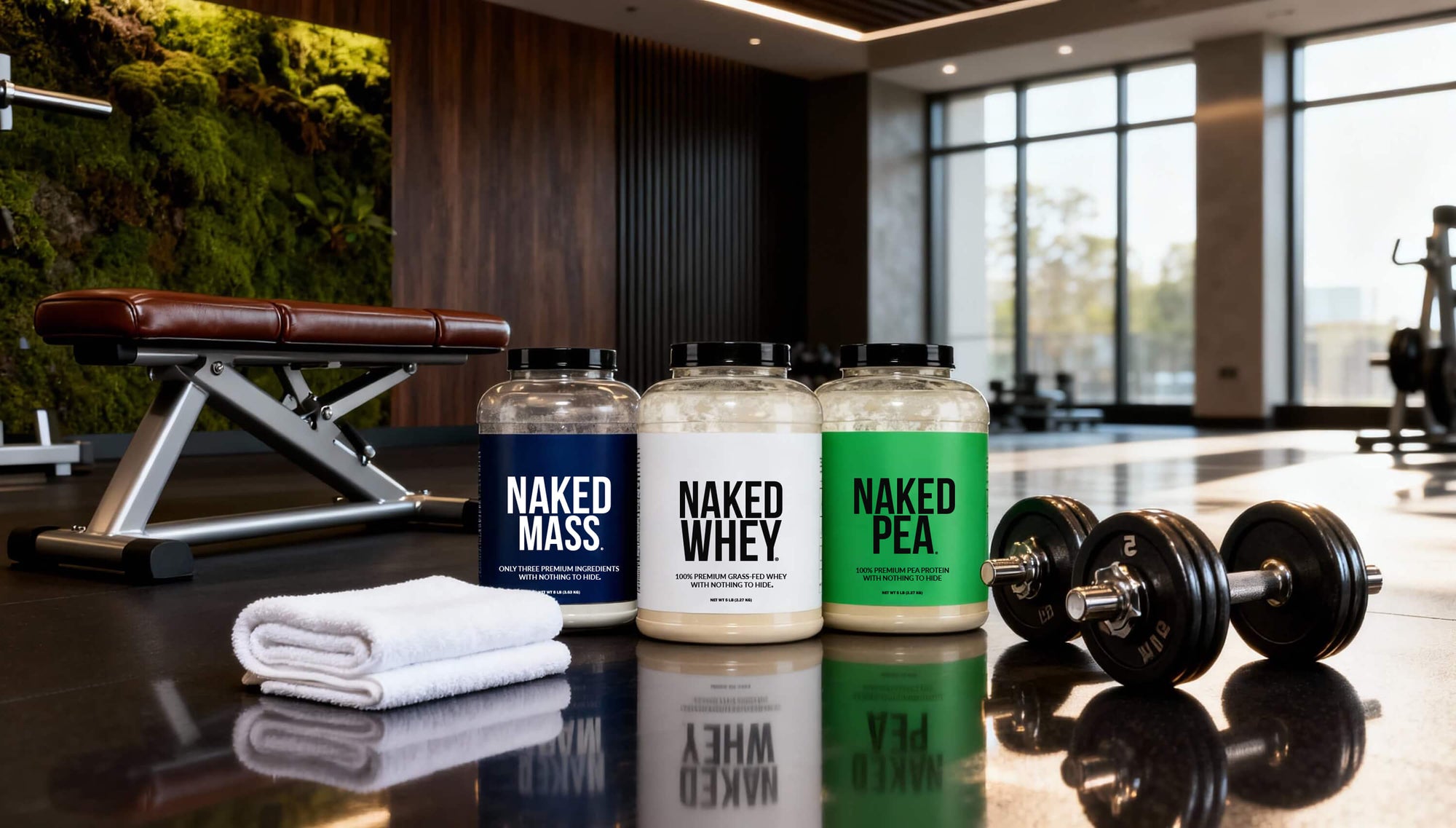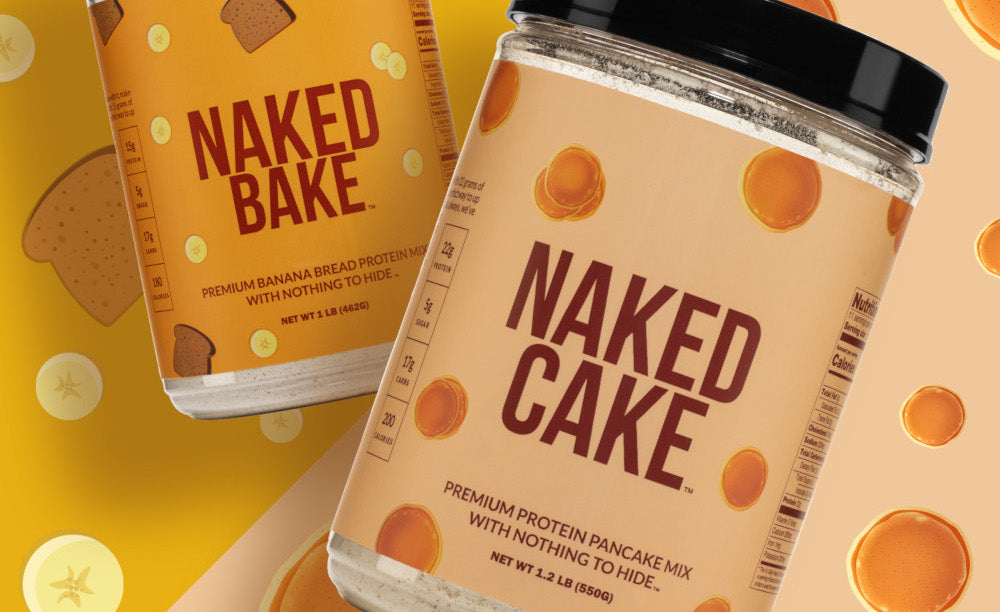Progressive overload is one of the most important principles to know if you’re trying to achieve consistent muscle growth, fat loss, or any other fitness goal.
It’s a principle commonly followed in strength and endurance training and is perfect for anyone who wants to build a better version of themselves in the gym.
Keep reading to learn what progressive overload is, why it’s so powerful, and how to start implementing progressive overload training in your workouts.
What is Progressive Overload?
Progressive overload involves gradually increasing the intensity of your workouts over time, to induce beneficial adaptations in the muscles and nervous system.
There are many ways to achieve progressive overload, but the most common is by increasing weight.
With bench press, for example, you might add 5 lbs to your lift each week - if your starting point is 120 lbs, increase it to 125 lbs the next week, then 130 lbs, 135 lbs, and so on.
With this plan, in the space of three months, you will have taken your bench press from 120 lbs to 180 lbs.
This is progressive overload - gradually increasing your output in small, manageable chunks.
How Progressive Overload Works
The point of progressive overload is to force the body to adapt to a consistently higher workload, spurring muscular, metabolic, hormonal, and nervous system adaptations to keep up with the increased load.
Put it this way. If you always lift the same weight, for the same reps and sets, the same number of times each week, your body will adapt to the training you’re doing, and at a point, your strength and muscle size will not improve any further.
This can result in a plateau, which a lot of people struggle with in strength training.
Progressive overload, by consistently increasing your training load, forces the body to consistently adapt to more work, which requires increased output from the muscles and the central nervous system.
Numerous studies have shown that progressive overload works.
This study tested the effects of increasing weight in resistance training over a 12-week period, and found a positive correlation for strength and muscle gain.
Another study, again testing progressive loading over a 12-week training plan, found 12-14% increases in muscle size from its participants.

Who is Progressive Overload Training Good For?
Progressive overload training is most often used in strength training and resistance training, to increase strength and muscle muscle mass.
However, it can also be used in several other ways, for other fitness goals.
For example, if you’re training for endurance, you can consistently increase the length of your workouts to force your body to adapt and sustain output for longer.
You could do progressive overload for cardiovascular training, by consistently increasing the speed or duration of your cardio, which will help your cardiovascular system adapt to more intense training.
Realistically, progressive overload can be used for anything, as long as you have some kind of metric you can control and gradually increase over time.
How to Do Progressive Overload
Though it’s most commonly discussed in terms of weight, there are many ways to do progressive overload, which may work better if:
- You’re training for a goal other than strength or muscle hypertrophy.
- You don't have many heavy weights at your gym (e.g. there are no higher dumbbells or plates you can move on to).
- You’re struggling to lift higher weights and still maintain correct form.
Here are some ideas for how you can progressively increase your training load:
Resistance (E.g. Weight)
Increasing resistance is the most common way to do overload training.
This could mean increasing weight (i.e. adding another plate to the barbell or moving up to heavier dumbbells), or increasing resistance by adding a resistance band to your exercise, or finding some other way to make the exercise more difficult.
Reps
If you can’t add more weight, you can still achieve progressive overload by adding more reps.
Instead of adding a few pounds to your lift, try going from 8 reps to 10 reps in each set. The following week, increase it again from 10 to 12.
This is great for training muscular endurance, as well as for managing injury risk, as it allows you to progressively overload while lifting lighter weights.
Sets
The same thing works with sets. You might start with 3 sets of 8, increase it to 4 sets, then 5, and progressively overload by doing a higher total number of reps across all sets.
Duration

For some exercises and goals it’s more natural to increase the duration of your training.
This is great for cardio - working on the treadmill or elliptical, you might set a goal to gradually work out for longer each week.
Total Training Volume
Total volume is another metric you can use for progressive overload. This means the total amount of weight you lift, combined with the total number of reps and sets.
This could mean a mix of increasing reps, sets and/or weight in your workout to achieve greater overall training volume.
Rest (Decrease)
Finally, you could also decrease the rest time between sets or exercises to achieve progressive overload.
This might not work as well for strength training (and there’s a limit to how much you can progress in this way), but it can be beneficial for making small gains in cardio and hypertrophy.
Risks and Limits of Training for Progressive Overload

Progressive overload training is generally safe and effective, but does have some risks.
The biggest is hurting yourself by trying to progress too fast - going too heavy or doing extra reps that your body can’t handle.
You may also end up focusing more on training load and forgetting about form, which will result in fewer benefits and increased risks.
In terms of the limits of progressive overload, you might find it hard to progress after a while, either because you’re plateauing, or because you run out of equipment to increase weight.
In this case, try more creative ways of increasing training load, as discussed above.
Tips for Doing Progressive Overload Safely
Here are a few things to keep in mind to make sure your progressive overload training routine is safe and effective.
Maintain Good Form
Always pay attention to your form. Increasing weight doesn’t mean anything if you’re lifting with poor form, and is more likely to get you hurt.
Make sure you’re increasing weight, reps, sets or whatever it is while still keeping proper form through every rep.
Don’t Try to Progress Too Fast

It can be tempting to try and make big jumps, but this just increases the risk, as well as the chance of plateauing.
Progressive overload works best when you do a lot of minor increases, maintained over a consistent training schedule.
Start low, and try to focus on steady but small improvements.
Hydrate During Your Workout
As always, it’s important to hydrate properly. Your body will be getting put through higher rates of exertion each time you work out, which means an increasing need for water and electrolytes to fuel your training session.
Focus on Rest and Nutrition Between Workouts
Similarly, rest, recovery and nutrition become all the more important when your training intensity rises.
Make sure you’re getting enough calories in to support your workouts and protein to repair and rebuild damaged muscle fibers. Adequately rest between workouts, and maximize recovery by getting high-quality, consistent sleep.
Progressive Overload Workout Plan

Here’s an example of how you might integrate progressive overload into your workout, using a sample three-exercise upper body workout targeting the back and shoulders.
Week One:
- Deadlift: 150 lbs - 3 sets x 8 reps
- Bent-over row (barbell): 60lbs - 3 sets x 8 reps
- Pull-ups: 5 sets x 6 reps (total 30)
Week Two:
- Deadlift: 155 lbs - 3 sets x 8 reps
- Bent-over row (barbell): 60lbs - 4 sets x 10 reps
- Pull-ups: 6 sets x 6 reps (total 36)
Week Three:
- Deadlift: 160 lbs - 3 sets x 8 reps
- Bent-over row (barbell): 65lbs - 3 sets x 8 reps
- Pull-ups: 7 sets x 6 reps (total 42)
Week Four:
- Deadlift: 165 lbs - 3 sets x 8 reps
- Bent-over row (barbell): 65lbs - 4 sets x 10 reps
- Pull-ups: 7 sets x 7 reps (total 49)
Consistently increase your training volume week to week in this fashion.
If you combine a system of progressive overload with consistent full-body workouts, you're almost assured to see consistent results.














